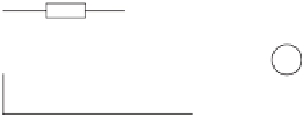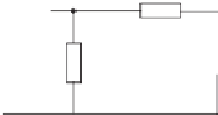Environmental Engineering Reference
In-Depth Information
In this chapter, it is proved that in order for parallel-connected inverters to share the load
in proportion to their power ratings, the inverters should have the same per-unit impedance
when the conventional droop controller is used (Zhong 2012c). It also requires that the RMS
voltage set-points for the inverters be the same. Both are very strong conditions and this is
the main reason why many different approaches have been proposed to improve the accuracy
of power sharing. After a thorough analysis of the error in power sharing, a robust droop
controller is presented to achieve accurate proportional load sharing among inverters that are
operated in parallel. The strategy works for the stand-alone mode and, naturally, for the grid-
connected mode as well. The accuracy of sharing does not depend on the output impedance
of the inverters (as long as they are of the same type) nor on the RMS voltage set-point and,
hence, it is robust to numerical computational errors, disturbances, noises, parameter drifts
and component mismatches. Moreover, the robust droop controller is able to regulate the load
voltage so that the voltage drop due to the load effect and the droop effect is reduced. The
sensitivity to the errors in the global settings of the rated frequency and rated voltage is also
analysed, which shows that these settings should be accurate.
The robust droop controller is discussed for R-inverters at first, followed by C-inverters and
L-inverters, with experimental results.
19.2 Problem Description
Figure 19.1 shows two inverters connected in parallel. The line impedance is omitted, assuming
that the output impedances of the inverters are designed to dominate the impedance from the
inverter to the AC-bus. The reference voltages of the two inverters are, respectively,
√
2
E
1
sin(
v
r
1
=
ω
1
t
+
δ
1
)
,
√
2
E
2
sin(
v
r
2
=
ω
2
t
+
δ
2
)
.
The power ratings of the inverters are
S
1
E
∗
I
1
and
S
2
E
∗
I
2
. They share the same load
=
=
voltage
v
o
=
v
r
1
−
R
o
1
i
1
=
v
r
2
−
R
o
2
i
2
.
(19.1)
S
=
P
+
jQ
S
=
P
+
jQ
1
1
1
2
2
2
i
i
V
∠
2
Z
∠
θ
Z
∠
θ
o
1
1
o
2
2
v
v
~
~
E
∠
r
2
Z
E
∠
δ
r
1
1
1
2
2
Figure 19.1
Two inverters connected in parallel











Search WWH ::

Custom Search